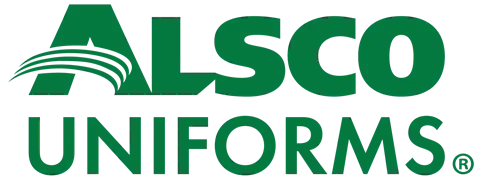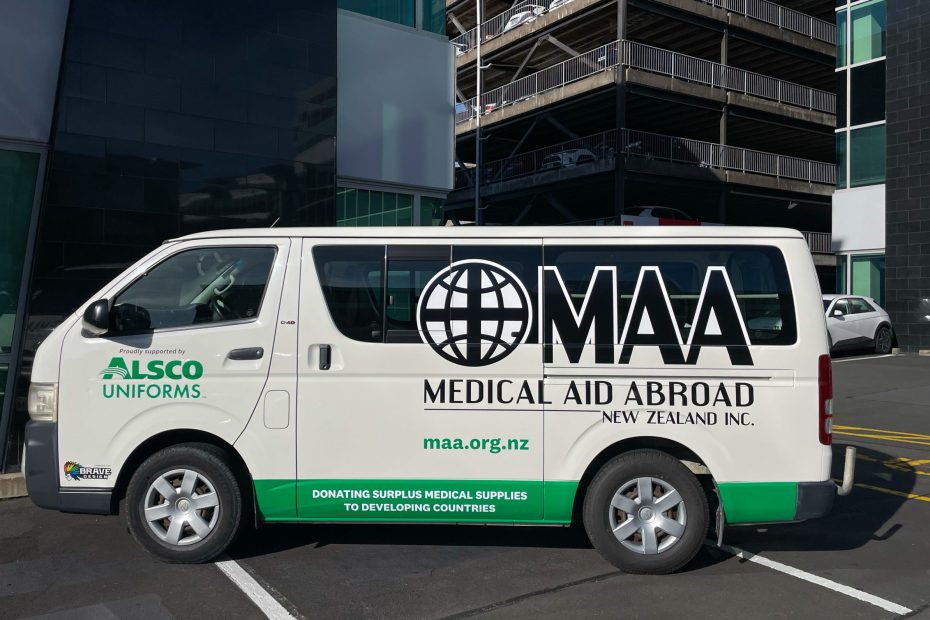Every year, companies all over the world lose millions of dollars in lost production and other expenses caused by a seemingly insignificant type of accidents – slipping and falling in the company’s premises.
If you are an owner of a company, you probably know how problematic and time consuming dealing with injuries at work can be.
Depending on who suffers this type of incident, losing an employer for some time can be anything from a big to a downright devastating problem.
This all means that finding a functional way to deal with wet surfaces in your business premises has to be among the priorities of any serious company.
For decades, Alsco has been part of the solution worldwide, with its rich offer of floor mats which absorb water. These mats are resistant to slipping and enable safe movement across potentially dangerous areas.
The mats produced by Alsco are designed to fit into any environment, be it a building hall, a lobby or a toilet.
How Big Is The Problem?
In truth, it’s difficult to find statistics relating specifically to washroom incidents, but there is plenty of information highlighting the significance of the broader ‘wet floor’ accident category. According to figures in Key Work Health and Safety Statistics 2014, published by Safe Work Australia, injuries caused by falls, trips and slips represented 21.4% of all serious workers compensation claims in 2011-2012.
Its prominent share of workplace injuries continues, with the Australia Bureau of Statistics (ABS) reporting that between July 2013 and June 2014, Australian workplaces registered 68,200 ‘falls on the same level’ (which includes slips and trips), or 13% of the total number of work-related injuries and illnesses over the 12-month period.
In the UK, the Health and Safety Executive (HSE) revealed that the vast majority of about 1,300 registered incidents of slips and trips in the food and drinks industry (pubs and restaurants etc) are accounted for by slips (80%), and of them 90% were caused by wet floors.
Meanwhile, the US reports 540,000 serious slip and fall injuries in the workplace on average each year, with as many as 460 workplace fatalities directly related to slips on wet floors.
The indictment of the ‘wet floor’ problem at work is pretty clear, but there is little reason for the threat to remain so high. Adequately managing wet floors in your workplace is not a very complex undertaking, and there are several steps that can be taken to greatly reduce the risk of falling on a wet floor, in washrooms, kitchens, lobbies or anywhere else.
Areas Which Can Get Slippery
Whatever the nature of your business, slips and trips are always a risk – even in carpeted offices, staff can trip over a dog-eared carpet corner and get injured in the fall. Wet areas are usually confined to specific locations, however, and while statistics fail to identify the precise location of incidents involving wet surfaces, common knowledge tells us they are confined to 6 main areas. These are the
- front and rear entrances, where rainwater is carried in on wet shoes, clothes and umbrellas,
- canteens, where spills can occur during break and lunchtime. Also, cisterns dispensing hot or cold drinks, and refrigerated display units may leak.
- kitchens, where water, grease, oil and moist ingredients can fall to the ground. Also refrigerators and other temperature-controlled food storage units might leak.
- warehouses and workshops where machinery oils, detergents and other liquid chemicals might spill.
- lobbies and waiting rooms, again where water from outdoors can be allowed to drip
- washrooms, where splashing around sinks, overflowing toilets and leaking pipes can lead to wet areas
Of course, any areas where there is a normally smooth surface – like marble floors or ceramic tiled floors – are aesthetically impressive and easy to clean, but they become hazardous surfaces should there be spillage at all.
Tips To Prevent Accidents
As with all health and safety issues, there are several steps you can take to counter the likelihood of there being an accident. In fact, managing wet floors in washrooms, entrance lobbies and general walkways, is perhaps the most straightforward of all the safety-related tasks in any working environment.
We have put together a shortlist of the top 6 tips for managing wet floors in washrooms at work, and in that way protecting staff and visitors from the threat of slipping and suffering an injury – or worse.
Tip 1 – Place the signs
First you need to consider clearly marking wet floors whenever and wherever they appear. For this purpose you can use one of the standard signs which are available everywhere, with a “Caution! The floor is wet!” message written on them. You need to place the signs strategically well – placing them on the wet floor is a mistake, since by the time people see them they may have already stepped on the wet surface and risk falling.
It is also very important that the signs aren’t covered by something, and that it is impossible to pass the sign without actually reading it.
There are two types of signs you need to consider getting. The first type is the removable sign, portable enough that you can carry it in your hands and deliver it where necessary as soon as a situation arises.
The second type is the one which gets fastened on the wall and is usually placed in washrooms, around sinks, but also around windows on which the water can condensate and drip on the floor.
Consider also introducing “spillage reporting” and train employees to report on wet floors in the building whenever and immediately after they see one.
Tip 2 – Don’t let people discover wet surface by accident
Either by using the signs themself, or anything else sufficiently bulky, you need to block entrance to the area which is wet. People generally don’t pay much attention to what they walk into, especially when they have a lot of other things on their minds, which is usually the case at work.
This is important not just for workers in the company, but also for clients, in case your company receives them in the premises.
Tip 3 – Let everybody know
Letting people know that the floor is wet is only step one in the process of maximising awareness of the risk of slipping and falling. Vigilance is one of the key tools in keeping people safe and establishing high safety standards.
Putting up posters and other visual materials on the walls in corridors is a really good idea. Even if people don’t think much about what they see on those posters, it is likely that they will subconsciously understand the risks of slipping.
These posters are very easy to find on the internet and are usually available to download for free. Do make sure you print them on large formats because they need to be clearly visible from the distance.
Tip 4 – Keep Cleaning Equipment Handy
Acting on all of the previous tips will definitely result in more safety for everyone working in or visiting your business. There is, however, something that undoubtedly wins as the most efficient method for eliminating slipping risk and that is quick action.
If spillage is removed before anyone manages to even reach the place where it occurred, there will be absolutely no chance an incident would happen.
In order to enable quick reaction times, you need to consider your cleaning closet distribution across the building and plan employing the sufficient number of cleaning staff to be able to react as soon as possible.
These closets need to be placed at strategic places and they always need to be adequately stocked with all the necessary equipment, such as buckets and mops, liquid absorbing materials, etc. Cleaning closets don’t have to be big, but in that case you need to organize them well enough to fit everything. Also, consider appointing a member of your staff to ensure closets are always kept well stocked.
Tip 5 – Make the right choice of floor mats
We have already identified toilets as the critical areas in any building where spillage can occur at any time. While keeping them spillage free with timely actions should be a priority, there are still ways to alleviate risks of dangerous falls before cleaning crew arrives.
Floor mats are an ideal solution for areas which get slippery all the time. The new technologies make floor mat materials able to soak up a lot of liquid while still providing a safe surface.
However, material is not everything. Floor mat design is also important, as it prevents the mat from sliding on the wet floor.
Consider placing a mat on every permanently or frequently wet surface. These are found not only in washrooms, but also at building entrances and other places, depending on the building in question.
Successfully managing wet areas in washrooms means finding a way to negate the risk of injury. At Alsco, we provide a variety of floor mats specifically designed to handle wet areas and reduce the risk of slipping. Depending on the nature of your work, there may be certain wet area mats needed for certain sections of the workplace. For example, there are thick mats that let liquid and debris to fall through while keeping workers above the spillage and allowing them to work on. They are popular in kitchens and workshops, but equally effective around those sink areas in workplace washrooms.
Entrance mats normally suitable for lobby areas are highly absorbent too, which can be useful if placed at the doorway into the washroom, but they can also be used around the sinks too. For more on Alsco Mats, check out our online brochure.
Tip 6 – Choose The Right Cleaning Schedule
Aside from timely reactions when a spillage occurs, it is important to impose a fix cleaning schedule which will at the same time keep the building clean and safe for workers.
General cleanings are best performed in the morning before employees come to work or after everybody has left. While the first scenario is more desireable (cleaning staff will not like it if they have to stay at work for such a long time), it requires some careful planning. If employees arrive at nine in the morning, it would be wise to perform cleaning one or even two hours earlier.
Timely cleaning will ensure that there are no wet areas left when workers arrive, which helps with general safety at work and makes cleaning itself more efficient, since dirty shoes can make quite a mess on a wet floor.
Solve The Problem With Alsco Mats
Over the years, Alsco has become a trusted name in the textile rental industry, serving a variety of industrial sectors. Through Alsco Mats, we provide floorcare solutions for every situation, making us the perfect option when it comes to managing wet areas in washrooms, kitchens, lobbies, and corridors.
And because we provide a complete mat rental service, our clients avoid the often high costs associated with purchases, maintaining and replacing floor mats in the workplace, with weekly rates starting from less than $1 a day.
Some of the key benefits of mat rental and you’ll see it makes good business sense:
- Keeps floors clean and prevents floor damage
- Presents a clean image to your staff and customers
- No capital outlay
- Complete managed service
- Tax-deductible advantages
For more on how Alsco Mats can contribute to a safer workplace in an affordable and reliable way, simply visit the website. You can also check out our range of floor mats on our brochure. And if you want to speak to one of our experienced team, you can fill our online enquiry form, or call us at 0800 4 25726 (0800 4 ALSCO).





